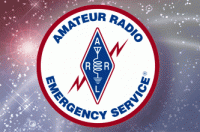|
Welcome,
Guest
|
TOPIC:
CALIFORNIA: When things go sideways... 2 years 2 months ago #832
|
When things go sideways, the all-volunteer Santa Cruz County ham radio communications team says, “No Phone, No Electricity, No Problem.”
The Santa Cruz Amateur Radio Emergency Service helps at a triathlon in Santa Cruz. (Bob Fike — Contributed) The Amateur Radio Emergency Service (ARES), long known as ham radio operators, is a national association for hams. The 75 members of the Santa Cruz chapter help in wide range of activities and events including emergencies. They create backup radio communications networks from their homes or vehicles, relaying information where needed or when traditional systems aren’t available. “All ARES members are ham radio operators and maintain an FCC-issued amateur radio license,” explained Patrick Hung, Santa Cruz ARES member. “We’re continuously training and ready responders for a range of needs. These can be helping event organizers keep track of activities, to locating missing people or connecting emergency agency personnel when their radios become inoperable.” Continuous readiness ARES members participate in countywide communications drills with Community Emergency Response Teams (CERT) and weekly statewide communications drills with city and the county Emergency Services Office to maintain preparedness. “ARES is an integral part of the county’s emergency services,” said Michael Beaton, who directs the county’s General Services Department and Emergency Operations Center. “ They were instrumental during the CZU fire and gave us a big lift. They’re very well versed in emergency response and a great group of folks.” Beaton became an ARES fan and now is a ham operator himself. During the 2020 CZU August Lightning Fire, local members provided communications to Equine Evacuations. They coordinated horse transportation at stables in the mountains when many forms of communications were out. Backup communications at the fairgrounds were provided for arriving evacuees needing shelter. ARES stationed members on-site 24/7 for a number of days, operating alongside CERT members. More often ARES creates communications for local events including the Aptos July Fourth parade, Fire in the Sky airport fireworks, Santa Cruz County Fair, Fireworks 50 horse endurance race, Santa Cruz Triathlon and the Strawberry Fields Forever and Sea Otter Classic. Bob Fike, the ARES chapter’s emergency coordinator and ham operator since 1990, loves being part of the organization and appreciates the growing community interest. “We’re training 50 or 60 new members a year and have a ‘no-egos’ team,” Fike explained. “Our communications are extremely local and mobile. It can be linked to CERT team members with multi-use radios. I appreciate helping keep our community as safe as possible. It’s like a church choir, amateur volunteers but very professional. We do take donations if event organizers choose to do that,” he adds. Why do they call it ham radio? The name “ham” is derived from the call letters of the first amateur wireless station operated by members of the Harvard Radio Club in 1908. They were Albert S. Hyman, Bob Ablmy and Poogie Murray. They decided to use the first letter of each last name as the station’s call or identity and became the first ham operators. Ford Kanzler is a Watsonville resident. Source: www.santacruzsentinel.com/2022/02/08/for...ils-ham-radio-works/ |
|
Please Log in or Create an account to join the conversation. |
Time to create page: 0.216 seconds

